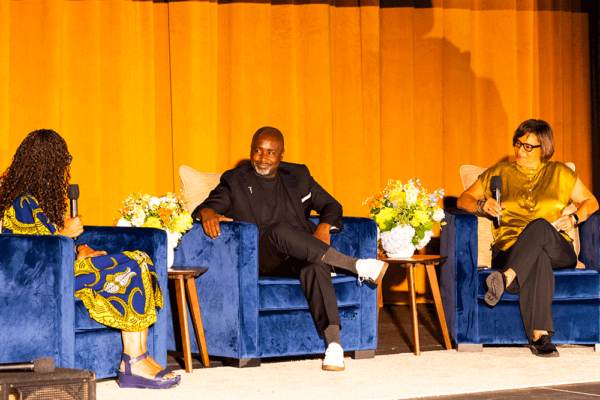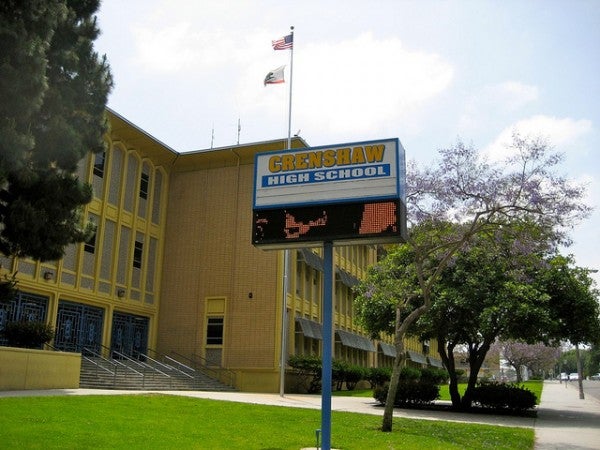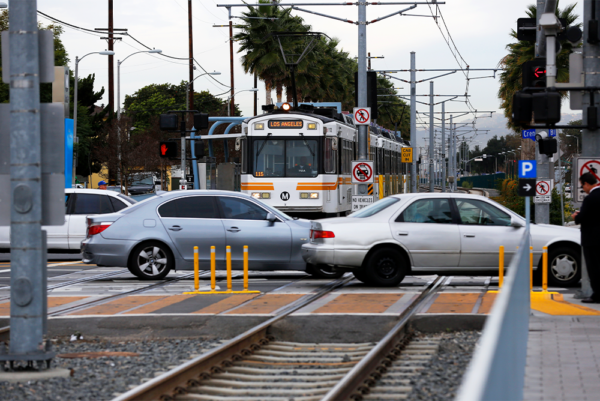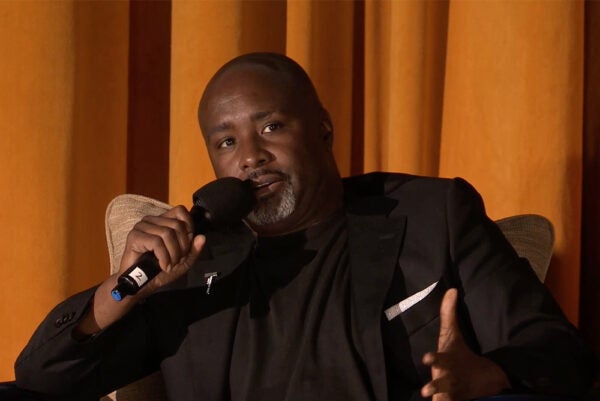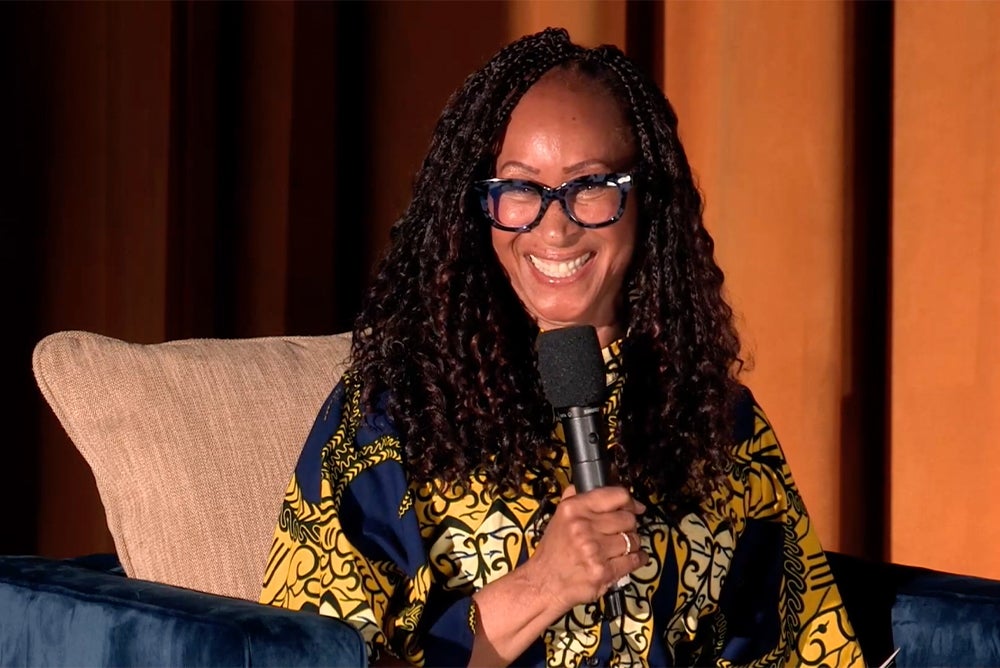
Courtesy of Zócalo.
Joy Simmons is an art collector and senior art and exhibition advisor for Destination Crenshaw, an open-air public art corridor down Crenshaw Boulevard in Los Angeles. She also serves as a commissioner of the Smithsonian American Art Museum and on the board of the California African American Museum. Before participating in the Zócalo/Destination Crenshaw program “How Do You Grow a Rose From Concrete?,” she sat down in our green room to chat about her trip to Ghana, who inspires her, and that time James Baldwin came to her high school.
What is a space where you feel like you belong?
This Crenshaw neighborhood. I grew up here—went to Audubon [Middle School], Crenshaw High School. My church is down the street. So this is home.
What are your most exciting summer plans?
I just returned from Accra, Ghana. I went to see where my people came from, and how they got here. I also did studio visits to see artists. Most of the artists I already knew, some I have in my collection, but I got to see them in different spaces— Amoako Boafo, Serge Clottey, Otis Quaicoe.
What is one of your most prized artworks in your collection?
I don’t have a favorite child. But one of my pieces is on loan to the Mickalene Thomas exhibition that’s going to open up in a couple of weeks. My David Hammons “Body Prints” I’ve had since the ’80s; it’s kind of a gem. And then there’s youngins that I really care about: Lauren Halsey did this intervention on the columns in my home, and Genevieve Gaignard did an installation in one of the bathrooms—it’s all tricked out.
Tell me about one artwork destined for Destination Crenshaw that you’re excited about.
Charles Dickson’s piece is going to be incredible, with the electrical and the lighting. I think Kehinde Wiley’s “Woman on Horseback” will be so impactful. When Maren Hassinger has her “An Object of Curiosity, Radiating Love” and people can walk by it and it glows and interacts, and you see it at nighttime, that’s going to be great. And then the mural on Good Shepherd as an homage to Charles White, you’re going be able to see it as you’re driving down the street and on the Sankofa Park ramp. And then there’s the Crenshaw Wall; I remember guys from my age that were doing murals on that wall back in the ’70s. It’s continually being revitalized, and the RTN Crew is going to redo it, tell a different story.
What is one of your favorite places to go in all of Los Angeles?
I really love going to “Kenny” Hahn Park. I see it as our Central Park. And to be able to come from a very urbanesque neighborhood, but then you’re in this park and you don’t even know you’re in Los Angeles. It’s just as beautiful as anything on the Westside.
Who is somebody that inspires you?
People who are really doing the work with respect to social justice and reform, like Bryan Stevenson. I’m a big fan of Thelma Golden, how she has really schooled and trained the next crop of Black curators—who are now doing the next crop of curators—telling stories in spaces that, when I was growing up, you couldn’t see us in. That’s why it’s important for me to loan my work to grow other institutions. To let people know that not only are we creating and making the work, but that we cherish it and care for it as well. I remember James Baldwin coming to visit Crenshaw when I was an 11th grader. I was a writer for the newspaper. I was starstruck, and I wasn’t even halfway aware of what he was doing at the time. That type of work and leadership and creativity inspires me.
What was the last thing that surprised you?
Going to the slave dungeons in Accra was surprising, shocking, and painful. You think about people being captured and they get on the boat—the Middle Passage—and then they’re slaves. But to understand in a very different way the depravity and the pain and the torture that was done between the jungle and the boat. In those dungeons. To see it, to be in that dark, to feel that closeness to it … And to then see me as an African American who is a descendant of that. I think that was the most surprising and humbling experience.




